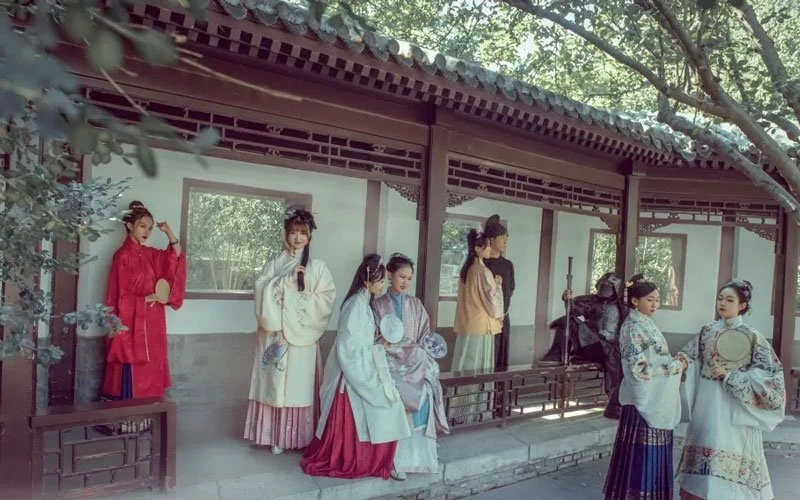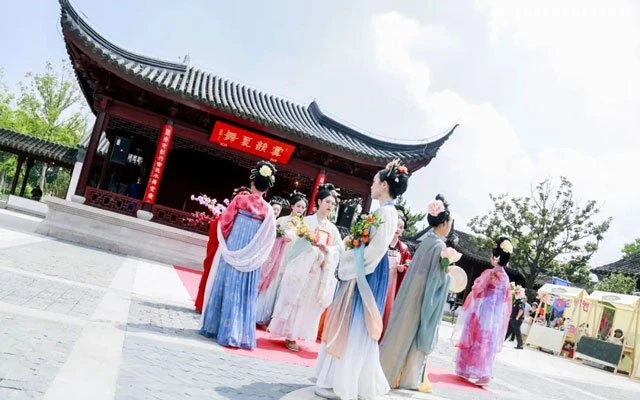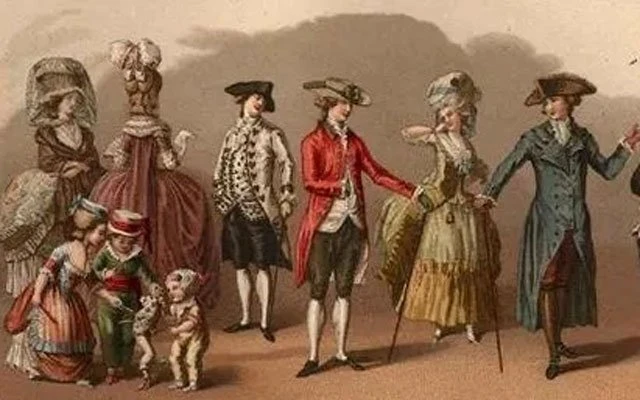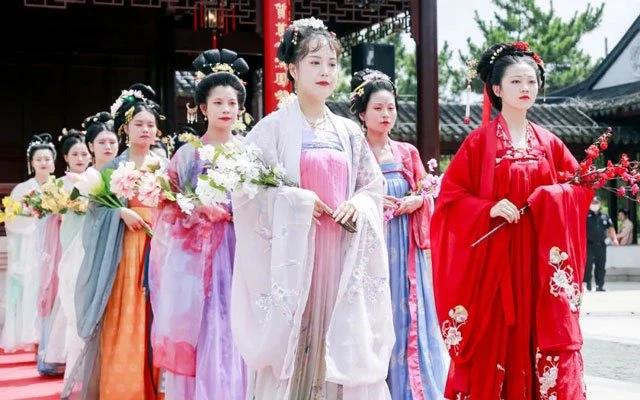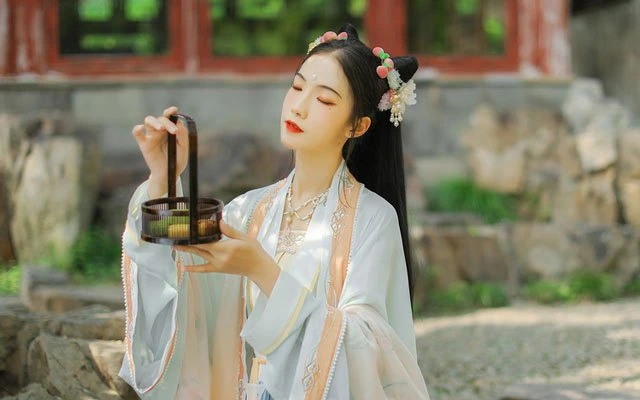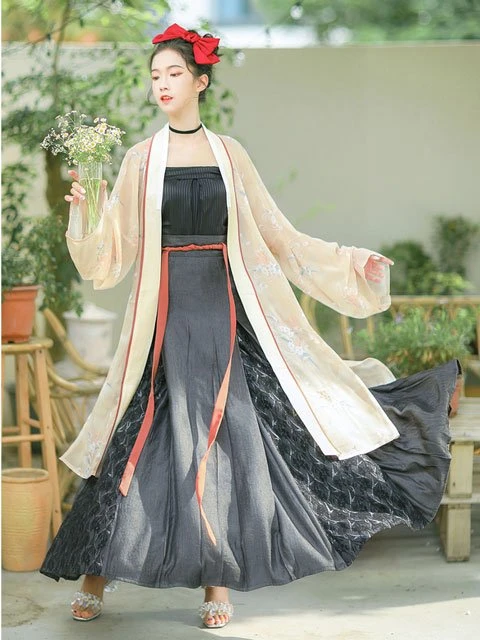In 2016, the Chinese Hanfu appeared on the Times Square screen in New York City, and in 2018 the first "Chinese Hua Costume Day" was held, 2019 Tmall Hanfu turnover exceeds 2 billion... Now more than ever, there is admiration and appreciation for Hanfu - is the performance of young people inheriting excellent traditional culture.
A series of seemingly related, but unrelated news stories involving economics, culture, diplomacy, education, and many other areas have also inspired many people to make the connection that Hanfu is becoming more and more popular.
For how did the Hanfu become popular? but always with divergent opinions, without major capital investment, without mainstream media publicity, and without clear academic support. How did this "new" thing, the Hanfu, suddenly appear in the streets and alleyways, in front of and behind the stage, and become a new era's scenic lines?
From a conceptual point of view, Hanfu is still no official definition; from an industrial planning point of view, there is still no related industry association; from an academic theoretical point of view, still revolves around the history of ancient Chinese costumes; since it is still continuing to develop, how is Hanfu going over the years? What are the shortcomings that must be filled in the future? Hanfu is about to enter the stage of self-remodeling which is inevitable for its development. It is imperative to establish a Hanfu system adapted to modern society.
What's Modern Hanfu?
Modern refers to the traditional national dress of modernity. Chinese Hanfu is one of the components of traditional Chinese culture that has existed since ancient times, but because of historical reasons, it has not developed naturally, discontinued for over 300 years. And these 300 years coincided with the era of great globalization changes, not only the development of socio-economic changes, but also the industrialization, modernization, urbanization, and globalization brought about by the four industrial revolutions. Our lives have changed almost completely. The continuation of Hanfu is not only to find its appearance style but also to pick up the tradition and make it rooted in modern people's social life.
Add the qualification of "modern" because what we modern people need is not the Chinese clothing system with piles of ancient relics, but the components that can be adapted to today's society, culture, and life.
It is only by adapting to a certain extent to the habits and needs of the modern society that traditional culture can have the prospect and space to develop in this diversified society. This is not only the problem that Hanfu must face but also one of the problems that all other contemporary cultures, except Western culture, need to face and solve.
Why doesn't Western dress need to be modernized?
The western dress has naturally evolved from the intricate and ornate baroque and rococo styles from the 17th and 18th centuries to today, but it has actually completed Industrialization and modernization, moreover, along with technological advantages, have spread all over the world in recent centuries. It has not only become the representative style of formal wear, but also the basic pattern of fashion throughout the ages.
As for other non-Western costumes, the kimono and hanbok are some of the more successful examples of modernization, although they are no longer the only costumes of their people, but exist only as costumes for specific scenes.
However, for some ethnic minority costumes, most of them have retained their traditional mode of production, but they have almost lost their charm to attract young people, or have been transformed into theatrical costumes, and if this continues, they will only be barely maintained under the strong protection of intangible cultural heritage.
For current Hanfu, it is important to look for the style of the ancient Hanfu if we are to recover this range of traditional clothing, but the important thing is to cross the threshold from ancient to modern. These two steps need to be attempted and explored simultaneously. Revival is to promote the formation of folk costumes and drive the excavation, protection, and inheritance of more traditional costumes.
How should modern Hanfu clothing theory be constructed?
"Hanfu" should be a complete system, and our aim is to promote it to become a living cultural component again, rather than a fragmented and marginalized memory and a rigid reproduction of ancient styles, or a comprehensive review of the costumes of a particular dynasty or generation.
The fragmentary elements and styles of the past have certain shortcomings and inappropriateness in modern social life and interpersonal interactions. Things should be adjusted to the changing times.
Only when it is recognized by society is it possible to pass it on. It is argued that the hanfu was broken off from the Ming Dynasty, so we should start by restoring the Ming Dynasty. This may seem reasonable, but it is not very feasible.
Today, people's aesthetics have changed to some extent, and ancient costumes are indeed beautiful and valuable, and can now be worn as well, but it should not be limited to that. In addition, today's social patterns, culture, and technology have changed to such an extent that it is practically impossible to make a 100% restoration.
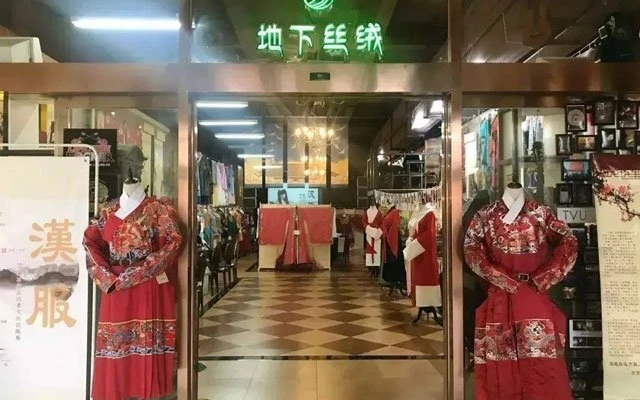
Brick-and-mortar Hanfu stores in modern shopping malls
The core of the system is inheritance, but it is never "improved" at will. It is designed according to the development of ancient costumes and cultural connotations after summing up and induction, and it is never just imagined.
The modern Hanfu system refers to the traditional clothing system of the Han people after modernization. It has its own development lineage and impetus to adapt to the natural development of modern society.
This is also an important reason why the Han costume must have textual research, but it can not be regarded as the only standard. Hanfu should be inherited, but not copied. The system here is to return to the original intention of the revival of Han costume, and fill the gap in the field of ethnic costume under the framework of ethnology.
As for what the reconstructed Hanfu system will look like?
- In the 4 main parts:
- Component system: clarifying the basic components of modern Hanfu, within the traditional framework of flat cutting, secondary molding, and inward leaning culture, handed down the straight collar, cross collar, and large sleeves, which are parts of the Han Chinese costume system.
- The style system refers to the style of Hanfu in terms that are easy to understand by modern people so that more modern people can understand the style of Hanfu. This is the so-called modern Hanfu shape.
- A collocation system, also a familiar modern term for collocation. For example, Ruqun, which means an upper Ru (襦)and lower skirt (裙). Duanhe (短褐), meaning short clothes and trousers. This is the typical dressing system in modern Hanfu, as for other Chinese fashion, Chinese elemental dressing, depending on personal interests, hobbies, all to do as you like.
- The application system, which is a modern social re-application of the ancient dress system after it has been broken, for example, on occasions such as bar mitzvahs, weddings, and traditional festivals, wearing different styles of Hanfu and incorporating the dress into everyday life.
Modern Hanfu system is not an industry standard
Modern Hanfu is by no means the industry standard. The Hanfu system here is the result of long-term social practice based on the Hanfu Revival Movement. What we have done is to sort out, summarize, organize and promote it, reflecting the cultural consciousness and natural development of culture, which is comprehensive and objective.
Today's society is no longer the uniform society it once was. The Hanfu system is simply a lineage of cultural development, not a specific industry or national standard with coercive force. There is no one to set a set of standards to enforce individual dress. What the modern Hanfu system should solve is the problem of insufficient academic research and serious lack of theories of Hanfu movement today, and it is to enter into the real theory of Hanfu. We can sustain our efforts in the future:
- First, to establish a set of academic theories that can withstand questions and heated debates. Hanfu is a cultural category with its own development lineage, not simply a costume system built up by styles. We can argue systematically and deeply about the meaning behind this culture.
- Secondly, to study modern development methods, and to view and analyze Hanfu with comprehensive disciplinary methods and ideas, so that people in mainstream society can gradually accept, understand and appreciate Hanfu culture, whose revival reflects the cultural self-confidence of contemporary young people and should be understood and participated in by more people.
- Thirdly, we can study Hanfu as a whole, focusing on clothing, but not limited to clothing, so that people can understand Hanfu as a whole, instead of being obsessed with "which dynasty" or "which tomb", which historians have been doing.
All in all, we will try our best to bring this re-emerging new thing, Hanfu, into the next new field that is suitable for its development and complete the theory construction.
The article is from "Modern Hanfu"
Author: MengYue;RuoMu.
